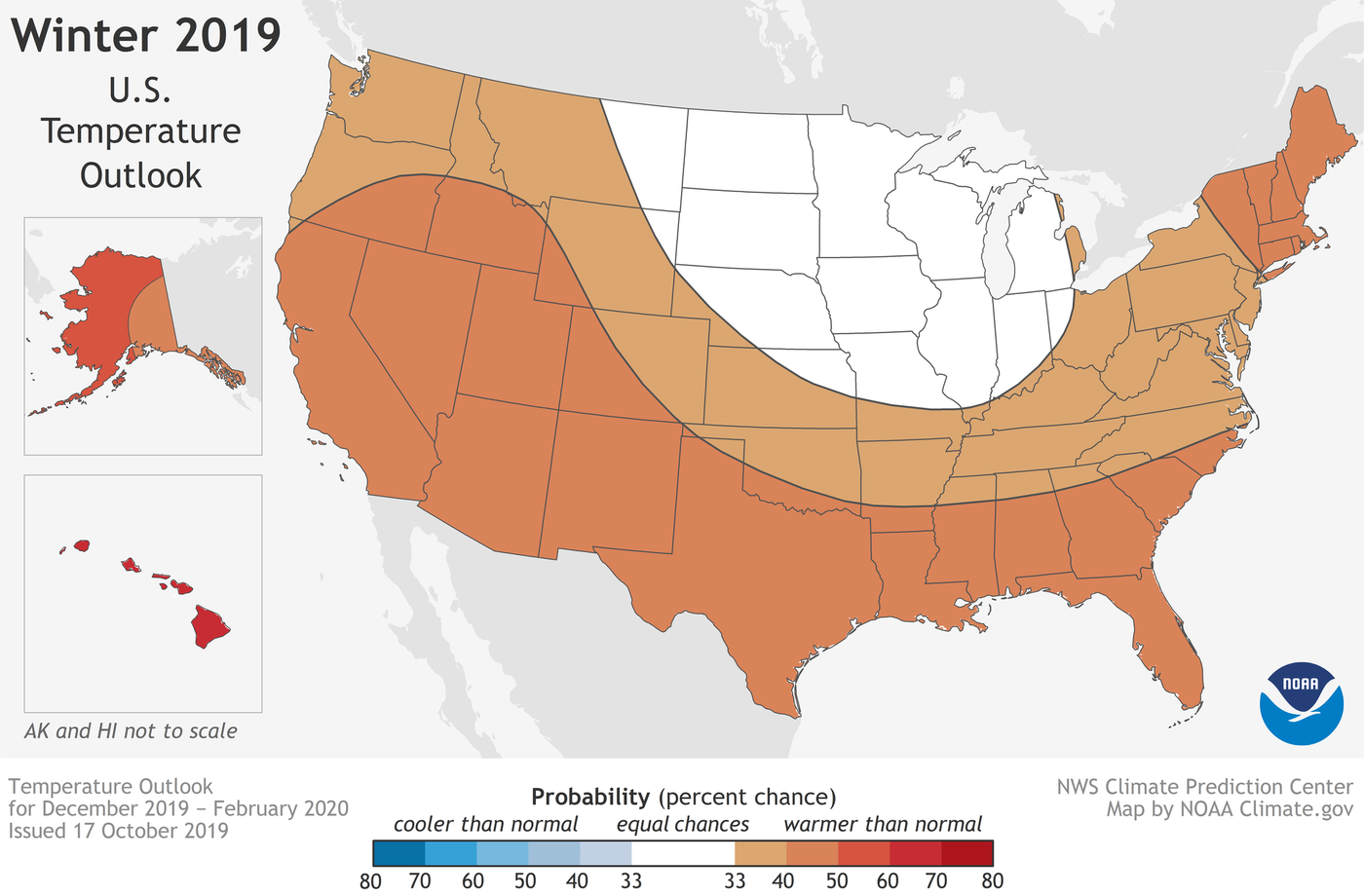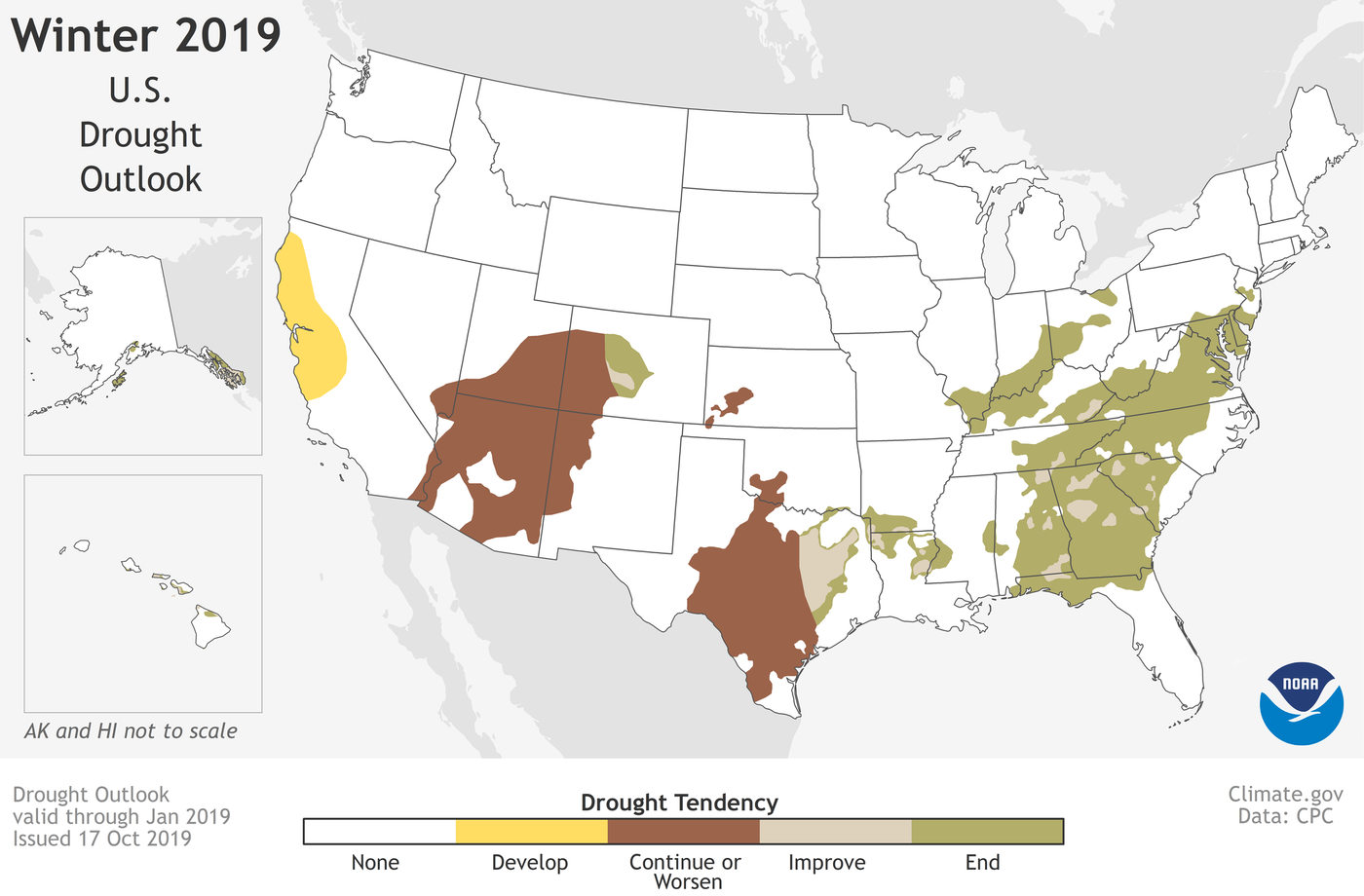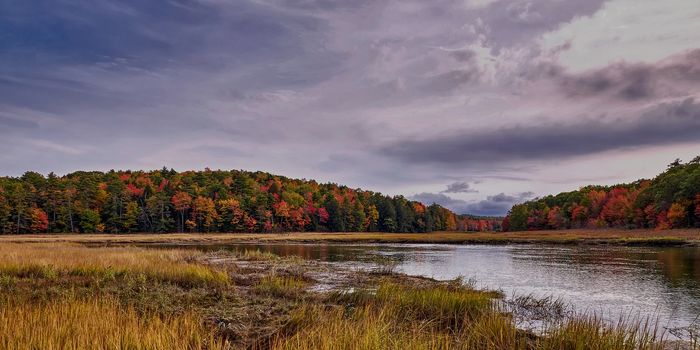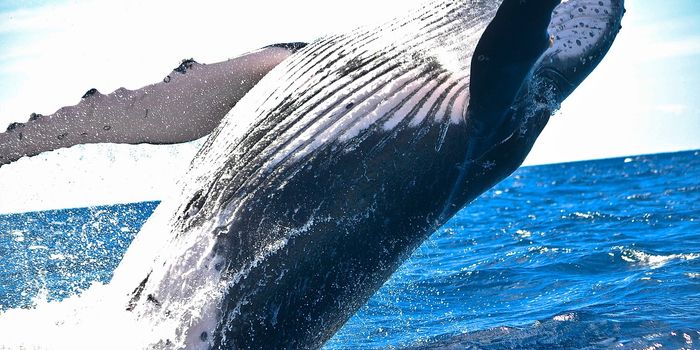Ready for Winter? NOAA's Winter Outlook is Here
Are you wondering what winter will look like in your region? Depending on where you live, you may be in for a mild season. Last week, the National Oceanic and Atmospheric Administration’s Climate Prediction Center published the 2019-2020 Winter Outlook. The video below contains a summary of the key points of the report.
The report covers temperature, precipitation, and drought predictions for December through February. It predicts that most of the United States can expect “warmer-than-average” temperatures, including the western, southern, and eastern regions. Alaska and Hawaii have higher chances of experiencing warmer-than-normal conditions.
This does not mean that cold or below-average temperatures will not occur. The report states that cold weather is indeed anticipated, and some areas may still experience “colder-than-average” temperatures. Although the report does not include snowfall accumulations, snowfall is expected and those who regularly expect snow should prepare for it.
Winter weather is influenced by the El Nino Southern Oscillation climate pattern, which the country is not currently experiencing—referred to as “neutral conditions.” Mike Halpert—the deputy director of the Climate Prediction Center—stated that “Without either El Nino or la Nina conditions, short-term climate patterns like the Arctic Oscillation will drive winter weather and cold result in large swings in temperature and precipitation.” NOAA defines the Arctic Oscillation as an atmospheric circulation pattern over the mid-to-high latitudes of the Northern Hemisphere. It can strongly impact climate and weather during winter in North America, Europe, and Asia.
Alaska, Hawaii, part of the Northern Plains, Upper Mississippi Valley, the Great Lakes, and parts of the mid-Atlantic and Northeast are expected to experience “wetter-than-average” conditions, according to the report. Northern and central California, Arkansas, Oklahoma, Mississippi, Louisiana, and parts of Texas can expect “drier-than-average” conditions.
NOAA reports that drought conditions are present across 20% of the country. High temperatures and low precipitation last month increased drought conditions throughout the country. Most of the southern United States should expect abnormally dry conditions throughout winter.
The Climate Prediction Center updates this outlook monthly. Changes will be noted in an update released late next month.
Sources: NOAA (images courtesy of NOAA), Climate Prediction Center











